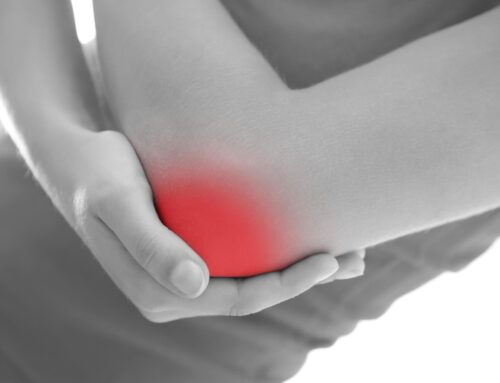Compression sleeves are versatile garments, designed to snugly wrap around limbs, offer a unique blend of comfort and functionality. By applying gentle pressure, they aid in a range of health and fitness goals, from enhancing blood circulation to supporting muscles during strenuous activities.
These sleeves have become a staple in various spheres, including sports, medical treatments, and everyday wellness routines, thanks to their ability to provide targeted compression.
What Are Compression Sleeves?
Compression sleeves are specialized garments designed to provide targeted pressure to specific areas of the body, typically the arms or legs. These sleeves are crafted from elastic materials that stretch and conform to the body’s contours, ensuring a snug, yet comfortable fit. The primary function of compression garments is to apply consistent pressure to the surface of the limbs, which can have a variety of health and performance benefits.
The concept behind compression technology is simple yet effective. By compressing the limb, these sleeves help to improve blood circulation, which is crucial for both health and athletic performance. Enhanced circulation means more oxygen and nutrients are delivered to the muscles, while waste products like lactic acid are more efficiently removed.
This process not only aids in muscle recovery and reduces fatigue but also helps in preventing injuries by stabilizing the muscles and joints.
Common uses of compression sleeves span across various scenarios:
- In Athletics
Athletes often wear compression aids to improve performance, reduce muscle soreness, and speed up recovery after intense physical activity. - For Medical Purposes
They are used in medical settings to assist in the treatment of lymphedema, deep vein thrombosis, and other circulatory issues. - Everyday Use
Many people wear compression daily to alleviate discomfort from prolonged standing or sitting, or to support weak or injured limbs.
Types of Compression Sleeves
Compression sleeves come in various types, each designed to cater to specific needs and scenarios. From athletes to medical patients, and everyday users, there’s a compression sleeve for everyone.
Athletic Compression
For athletes, the impact of compression sleeves cannot be overstated. These sleeves serve as a pivotal tool in enhancing athletic performance and facilitating muscle recovery. When worn, the sleeves exert pressure that boosts blood circulation, leading to increased oxygen delivery to the muscles.
This process of enhanced oxygenation is crucial in improving both performance and endurance, allowing athletes to push their limits. Additionally, compression sleeves play a significant role in reducing muscle oscillation during physical activities. This reduction in muscle movement is key in decreasing fatigue, enabling athletes to train more effectively and for longer durations.
Another critical aspect of compression garments is their role in post-exercise recovery. They assist in the expedited removal of lactic acid from the muscles, a factor that significantly reduces soreness and accelerates the recovery process. This quicker recovery is essential for athletes who undergo rigorous training regimes.
The support and stabilization provided by compression sleeves are instrumental in minimizing the risk of muscle strains and sprains. This added protection is vital for athletes as it helps in maintaining consistent training schedules and reduces the likelihood of injury-related setbacks.
Medical Compression
Medical compression sleeves play a crucial role in both the treatment and prevention of a variety of health conditions. They are particularly beneficial for managing lymphedema, where they significantly aid in reducing swelling and enhancing the circulation of lymphatic fluid.
This improvement in lymphatic flow is vital for patients dealing with such conditions. Additionally, compression sleeves are highly effective in addressing symptoms associated with venous disorders, including varicose veins and deep vein thrombosis. By improving blood flow and reducing venous pressure, these sleeves offer relief and support in managing these disorders.
Sleeves are commonly utilized by post-operative patients. In such cases, compression sleeves contribute to reducing swelling and promoting better blood circulation, which are key factors in the healing process. This makes them an invaluable tool in post-surgical recovery, helping patients regain their health more efficiently.
Everyday Wear Compression
Compression sleeves are a valuable asset not only for athletes and medical patients but also for everyday health and comfort. Their regular use is particularly advantageous for individuals with sedentary lifestyles or those who find themselves standing for prolonged periods.
The sleeves work effectively to maintain optimal blood flow, a crucial aspect for overall health and well-being. Additionally, they are instrumental in reducing swelling in the legs and feet, a frequent issue faced by people who spend much of their day either sitting or standing.
Beyond their functional benefits, compression sleeves are designed to be lightweight and easy to wear, making them a seamless and comfortable addition to daily attire. They provide support and relief while remaining non-intrusive, blending effortlessly into the routine of anyone looking to enhance their daily comfort and health.
How Compression Sleeves Help
Compression sleeves are more than just fabric; they’re tools that offer a range of benefits for different users. From athletes to medical patients, and even everyday individuals, the advantages of wearing compression sleeves are diverse and significant.
Enhancing Athletic Performance
For athletes, compression sleeves are a game-changer. They play a crucial role in both enhancing performance and aiding in muscle recovery.
- The pressure from the sleeves boosts blood circulation, which increases oxygen delivery to the muscles. This enhanced oxygenation helps in improving performance and endurance.
- By minimizing muscle oscillation during physical activities, compression sleeves help in reducing fatigue. This means athletes can train harder and longer.
- Post-exercise recovery is crucial. Compression sleeves aid in the faster removal of lactic acid from muscles, reducing soreness and speeding up the recovery process.
- The added support and stabilization provided by these sleeves can also help in reducing the risk of muscle strains and sprains.
Medical Benefits
In the medical field, compression sleeves are a vital component in the treatment and prevention of various conditions.
- For conditions like lymphedema, compression sleeves help in reducing swelling and improving lymphatic fluid circulation.
- They are effective in managing symptoms of venous disorders such as varicose veins and deep vein thrombosis by improving blood flow and reducing venous pressure.
- Post-operative patients often use compression sleeves to aid in reducing swelling and promoting better blood circulation, which is essential for healing.
Everyday Health and Comfort
Compression sleeves are not just for athletes and medical patients; they offer significant benefits for everyday health and comfort.
- Regular wear can help in maintaining optimal blood flow, which is especially beneficial for those with sedentary lifestyles or those who stand for long periods.
- They can help in minimizing swelling in the legs and feet, a common issue for people who sit or stand for extended periods.
- Lightweight and easy to wear, compression sleeves can be a comfortable addition to daily attire, providing support and relief without being intrusive.
Choosing the Right Compression Sleeve
Selecting the appropriate compression sleeve is crucial for maximizing its benefits. Whether you’re an athlete, dealing with a medical condition, or seeking everyday comfort, the right fit and type can make a significant difference. Here are some tips to help you choose the best compression sleeve for your needs, along with how Care-Med’s in-house experts can assist in this process.
Understand Your Needs
First and foremost, it’s important to identify the primary reason for needing a compression sleeve. Are you looking to enhance sports performance, address a medical condition, or simply seeking daily comfort? Different objectives necessitate different types of sleeves, each with varying levels of compression. Understanding your specific needs is the first step in choosing the right sleeve.
Get the Right Fit
The fit of your compression sleeve is crucial. It should be snug but not uncomfortably tight, providing even compression without causing discomfort or restricting movement. Incorrect sizing can not only be ineffective but may also lead to adverse effects. Ensuring a proper fit is key to reaping the full benefits of compression therapy.
Consider the Material
The material of the compression sleeve is another important factor. Look for high-quality, breathable fabrics that are comfortable for extended wear. The material should also be durable and easy to care for, ensuring that your sleeve remains effective over time.
Check Compression Level
Compression sleeves come in various levels of compression, typically measured in mmHg (millimeters of mercury). The level of compression you need may vary; athletes often prefer lower compression for greater flexibility, while certain medical conditions might require higher compression levels. Understanding these nuances is important in selecting a sleeve that meets your specific requirements.
Consult with Experts
At Care-Med, our in-house Chiropodists and Pedorthists are well-equipped to guide you in choosing the right compression sleeve. They can help with accurate measurements, recommend the appropriate compression level, and suggest the best type based on your individual needs.
Try Before You Buy
Whenever possible, it’s advisable to try on different compression sleeves to gauge how they feel. Pay attention to the fit and whether the sleeve stays in place without sliding down. This hands-on approach can be invaluable in finding the sleeve that feels right for you.
Look for Special Features
Some compression sleeves offer additional features like moisture-wicking, anti-odor properties, or designs tailored for specific body parts. These features can enhance comfort and functionality, making them worth considering based on your lifestyle and preferences.
Caring for Your Compression Sleeves
Proper care and maintenance of your compression sleeves are essential to ensure their effectiveness and longevity. Compression sleeves, like any garment, can wear out over time, but with the right care, you can maximize their lifespan and performance. Here are some tips to help you maintain your compression sleeves:
- Follow Washing Instructions
Always check the label for specific washing instructions. Most compression sleeves should be washed in cold water with mild soap. Avoid using fabric softeners or bleach, as these can degrade the elastic fibers. - Hand Wash When Possible
Hand washing is gentler on compression sleeves than machine washing. If you must use a washing machine, place the sleeves in a lingerie bag to protect them from getting stretched or torn. - Air Dry
Avoid using a dryer, as the heat can damage the elastic fibers. Instead, lay the sleeves flat or hang them up to air dry. Keep them away from direct sunlight and heat sources, as these can weaken the material. - Rotate Sleeves Regularly
If you wear compression sleeves frequently, consider having multiple pairs. Rotating them will reduce wear and tear, extending their life. - Avoid Rough Surfaces
Be mindful of rough surfaces that can snag or tear the fabric. When putting on or taking off your sleeves, take care not to pull them too hard or scratch them with fingernails or jewelry. - Inspect Regularly
Regularly check your sleeves for signs of wear and tear, such as thinning material, holes, or reduced elasticity. Replace them if they start to lose their compression or show significant signs of wear. - Store Properly
When not in use, store your compression sleeves in a cool, dry place. Avoid folding or rolling them tightly, which can stretch the fabric. Instead, lay them flat or loosely roll them.
By following these care tips, you can ensure that your compression sleeves remain in good condition, providing the maximum benefit for as long as possible.
Advantages of Compression Sleeves
Compression sleeves are more than just a piece of athletic gear or a medical accessory; they are a versatile tool that can significantly enhance your health and performance. Whether you’re an athlete looking to boost your performance and recovery, a patient managing a medical condition, or someone seeking everyday comfort and support, compression sleeves offer a range of benefits that cater to various needs.
At Care-Med LTD, we pride ourselves on our expertise in providing high-quality orthopaedic solutions, including a range of compression sleeves suited for different needs. Our in-house Chiropodists and Pedorthists are always ready to assist you in selecting the perfect sleeve, ensuring you get the right fit and type for your specific requirements. With over 17 years of experience in Toronto and a commitment to customer satisfaction, we are dedicated to helping you find the best solutions for your health and comfort.
Share This Story, Choose Your Platform!
Table of Contents
We specialize in orthotics, body braces, and compression wear tailored to your unique needs in Toronto. Reach out to us at info@caremed.care or call 416-782-5353 to book your fitting and consultation.
Experience the difference of customized solutions designed just for you.











